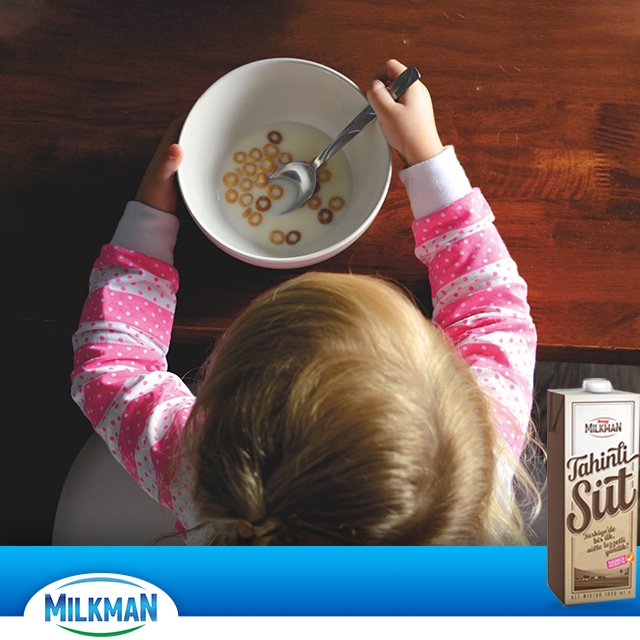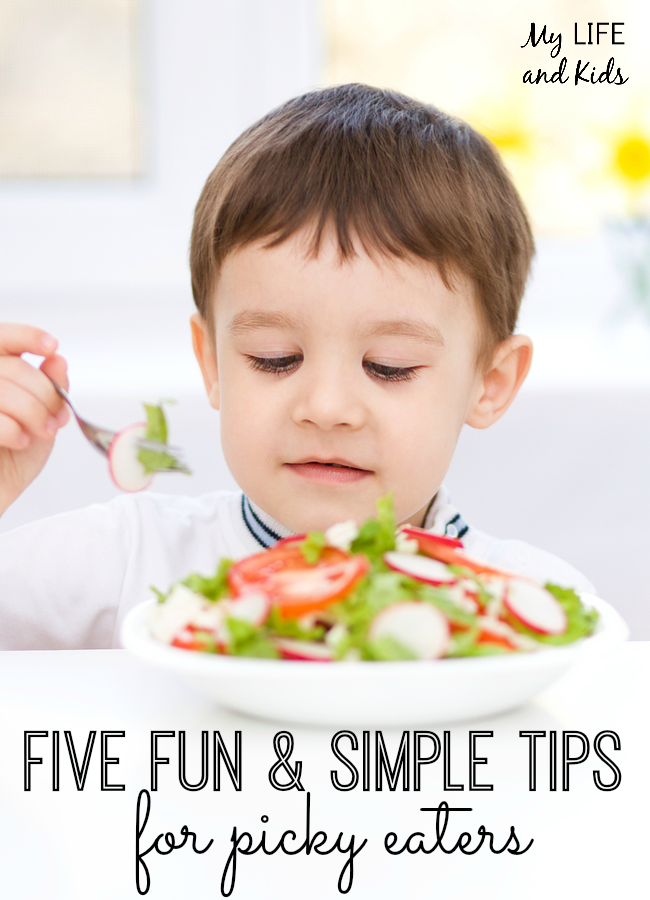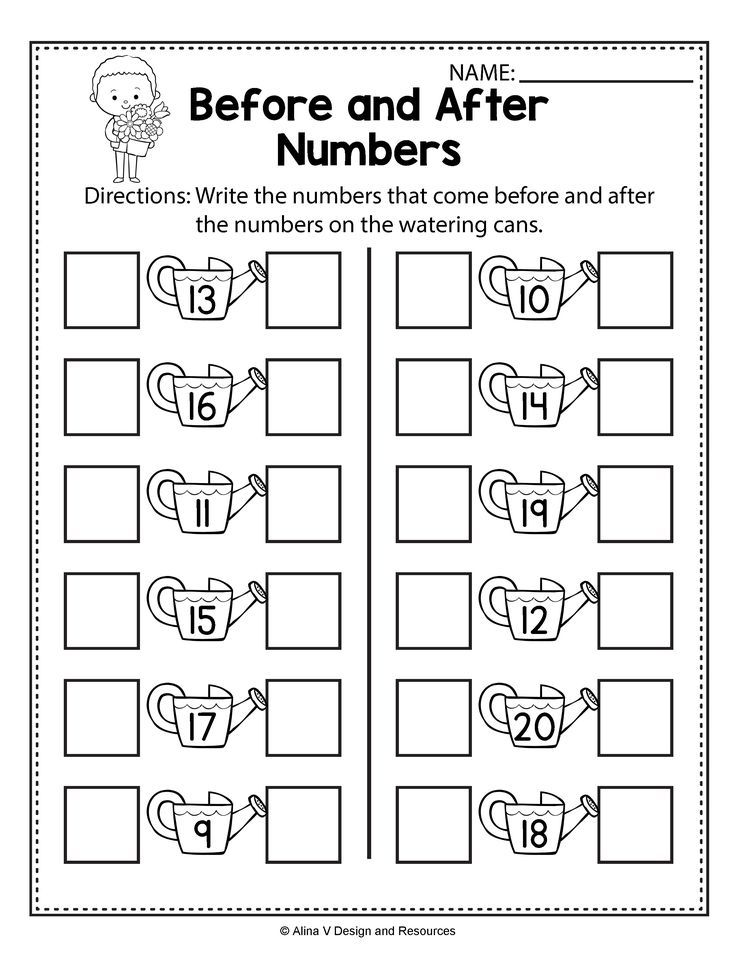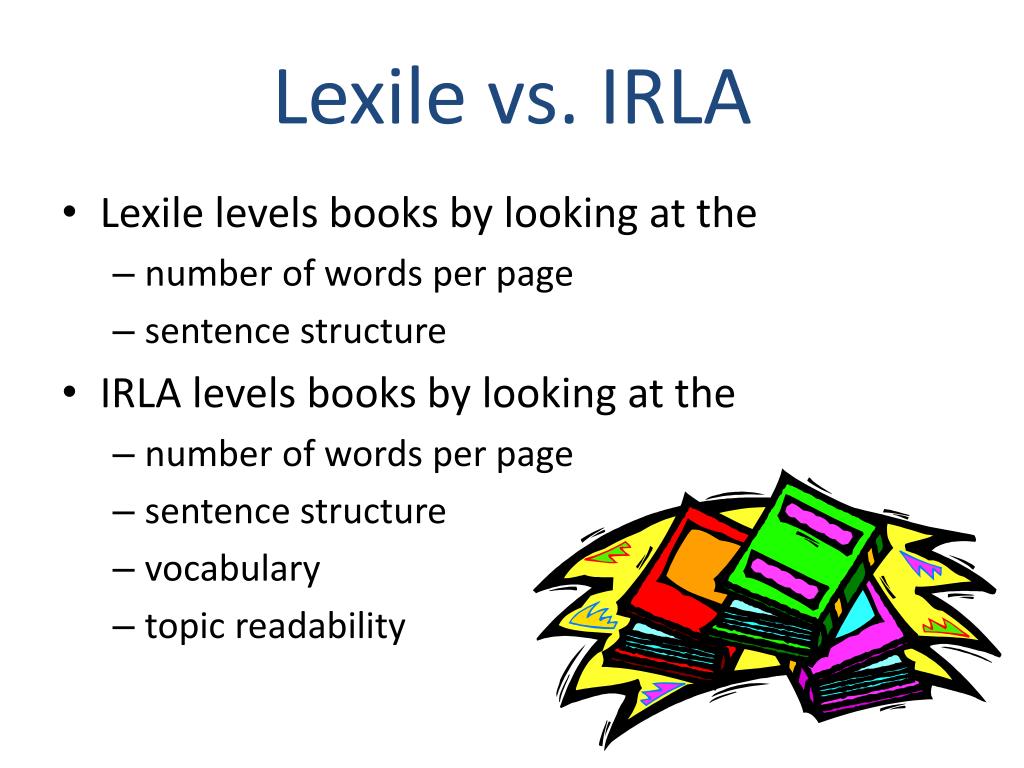Picky eater tips
10 Tips for Parents of Picky Eaters
Picky eating is often the norm for toddlers. After the rapid growth of infancy, when babies usually triple in weight, a toddler’s growth rate – and appetite – tends to slow down.
Toddlers also are beginning to develop food preferences, a fickle process. A toddler’s favorite food one day may hit the floor the next, or a snubbed food might suddenly become the one he or she can’t get enough of. For weeks, they may eat 1 or 2 preferred foods – and nothing else.
Try not to get frustrated by this typical toddler behavior. Just make healthy food choices available and know that, with time, your child's appetite and eating behaviors will level out. In the meantime, here are some tips that can help you get through the picky eater stage.
1. Family style. Share a meal together as a family as often as you can. This means no media distractions like TV or cell phones at mealtime. Use this time to model healthy eating. Serve one meal for the whole family and resist the urge to make another meal if your child refuses what you've served. This only encourages picky eating. Try to include at least one food your child likes with each meal and continue to provide a balanced meal, whether she eats it or not.
2. Food fights. If your toddler refuses a meal, avoid fussing over it. It’s good for children to learn to listen to their bodies and use hunger as a guide. If they ate a big breakfast or lunch, for example, they may not be interested in eating much the rest of the day. It's a parent's responsibility to provide food, and the child’s decision to eat it. Pressuring kids to eat, or punishing them if they don't, can make them actively dislike foods they may otherwise like.
3. Break from bribes. Tempting as it may be, try not to bribe your children with treats for eating other foods. This can make the "prize" food even more exciting, and the food you want them to try an unpleasant chore. It also can lead to nightly battles at the dinner table.
4. Try, try again. Just because a child refuses a food once, don't give up. Keep offering new foods and those your child didn't like before. It can take as many as 10 or more times tasting a food before a toddler’s taste buds accept it. Scheduled meals and limiting snacks can help ensure your child is hungry when a new food is introduced.
Just because a child refuses a food once, don't give up. Keep offering new foods and those your child didn't like before. It can take as many as 10 or more times tasting a food before a toddler’s taste buds accept it. Scheduled meals and limiting snacks can help ensure your child is hungry when a new food is introduced.
5. Variety: the spice. Offer a variety of healthy foods, especially vegetables and fruits, and include higher protein foods like meat and deboned fish at least 2 times per week. Help your child explore new flavors and textures in food. Try adding different herbs and spices to simple meals to make them tastier. To minimize waste, offer new foods in small amounts and wait at least a week or two before reintroducing the same food.
6. Make food fun. Toddlers are especially open to trying foods arranged in eye-catching, creative ways. Make foods look irresistible by arranging them in fun, colorful shapes kids can recognize. Kids this age also tend to enjoy any food involving a dip. Finger foods are also usually a hit with toddlers. Cut solid foods into bite size pieces they can easily eat themselves, making sure the pieces are small enough to avoid the risk of choking.
Finger foods are also usually a hit with toddlers. Cut solid foods into bite size pieces they can easily eat themselves, making sure the pieces are small enough to avoid the risk of choking.
7. Involve kids in meal planning. Put your toddler's growing interest in exercising control to good use. Let you child pick which fruit and vegetable to make for dinner or during visits to the grocery store or farmer's market. Read kid-friendly cookbooks together and let your child pick out new recipes to try.
8. Tiny chefs. Some cooking tasks are perfect for toddlers (with lots of supervision, of course): sifting, stirring, counting ingredients, picking fresh herbs from a garden or windowsill, and “painting” on cooking oil with a pastry brush, to name a few.
9. Crossing bridges. Once a food is accepted, use what nutritionists call "food bridges" to introduce others with similar color, flavor and texture to help expand variety in what your child will eat. If your child likes pumpkin pie, for example, try mashed sweet potatoes and then mashed carrots.
If your child likes pumpkin pie, for example, try mashed sweet potatoes and then mashed carrots.
10. A fine pair. Try serving unfamiliar foods, or flavors young children tend to dislike at first (sour and bitter), with familiar foods toddlers naturally prefer (sweet and salty). Pairing broccoli (bitter) with grated cheese (salty), for example, is a great combination for toddler taste buds.
Remember…
If you are concerned about your child’s diet, talk with your pediatrician, who can help troubleshoot and make sure your child is getting all the necessary nutrients to grow and develop. Also keep in mind that picky eating usually is a normal developmental stage for toddlers. Do your best to patiently guide them on their path toward healthy eating.
Additional Information:
- Winning the Food Fights
- The Picky Eater Project: 6 Weeks to Happier, Healthier Family Mealtimes
- AAP Voices Blog: Kids Nutrition and the Power of Packaging
The information contained on this Web site should not be used as a substitute for the medical care and advice of your pediatrician. There may be variations in treatment that your pediatrician may recommend based on individual facts and circumstances.
There may be variations in treatment that your pediatrician may recommend based on individual facts and circumstances.
16 Helpful Tips for Picky Eaters
While you may think you’re alone in the struggle to get your child to try new foods, many parents have the same issue.
In fact, studies have found that as many as 50% of parents consider their preschool-age children to be picky eaters (1).
Dealing with children who are picky eaters can be frustrating, especially when you’re unsure of effective and safe ways to expand your child’s food preferences.
Plus, children who are limited to only a few foods are at risk of not getting the proper amount and variety of nutrients that their growing bodies need to thrive.
The good news is that there are many evidence-based ways to persuade your child to try, accept and even enjoy new foods.
Here are 16 helpful tips to try with your picky eater.
1. Be Creative With Recipes and Presentation
Some kids may be put off by the texture or appearance of certain foods.
This is why making foods look appealing to your child is important when getting them to try new dishes.
For example, adding a few leaves of spinach or kale to your child’s favorite brightly colored smoothie is a great way to introduce leafy greens.
Chopped vegetables like peppers, carrots, onions and mushrooms can be easily added to child-friendly recipes like pasta sauces, pizza and soup.
Another way to make foods look more appetizing to children is to present them in a way that is fun and creative, for example by using star cookie cutters to make fresh fruits and vegetables into fun shapes.
2. Be a Food Role Model for Your Child
Though you may not realize it, your children are impacted by your food choices.
Children learn about foods and food preferences by watching the eating behaviors of others.
In fact, research shows that young children are more likely to accept new foods when others around them are eating the food as well (2).
A study in 160 families found that children who observed parents consuming vegetables for a snack and a green salad with dinner were significantly more likely to meet daily fruit and vegetable recommendations than children who did not (3).
Try increasing your consumption of healthy foods like vegetables and enjoying them at meals and as snacks in front of your child.
Making healthy eating the norm in your household and letting your children observe you eating nutritious foods can help them gain the confidence to try them as well.
3. Start With Small Tastes
It’s normal for parents to want to feed their children hearty portions to ensure they get the calories they need.
However, when trying new foods, smaller may be better.
Giving children large portions may overwhelm them and cause them to refuse the food simply because the serving is too big.
When trying out new foods, start with a small amount and present it before other more favored items.
For example, dish out a few peas for your child to try before his or her favorite dinner of lasagna.
If they do well with the smaller portion, slowly increase the amount of the new food at subsequent meals until a normal serving size is reached.
4. Reward Your Child the Right Way
Often, parents tempt children to try a new food by promising a reward of dessert or treats later.
However, this may not be the best way to increase food acceptance.
Using unhealthy foods like ice cream, chips or soda as a reward may lead children to consume an excessive amount of calories and eat when they’re not necessarily hungry.
Experts suggest that using non-food rewards to encourage food acceptance is best.
Simply using verbal praise to let children know that you’re proud of them is one method.
Stickers, pencils, extra play time or allowing your child to choose a favorite game to play after dinner are examples of non-food related rewards that you can use to promote food acceptance.
5. Rule Out Food Intolerances
Although picky eating is common in children, it’s a good idea to rule out food intolerances and allergies as well.
While allergies have clear symptoms such as rashes, itching and swelling of the face or throat, intolerances can be harder to identify (4).
Pay attention to what your child is refusing to eat by jotting it down in a journal.
If your child tends to shy away from foods such as dairy products, foods that contain gluten or cruciferous vegetables, they may be experiencing unpleasant symptoms related to a food intolerance.
Ask your child if there are any foods that make them feel nauseated, bloated or sick in any way and take their answer seriously.
If you think your child may have a food allergy or intolerance, speak with your child’s pediatrician to discuss the best course of action.
6. Remember That You are in Charge
Kids can be very persuasive, which is why it’s important for parents to remember that they should be in control.
Picky eaters often ask for specific meals, even if the rest of the family is eating something else.
It’s recommended that parents offer the same meal to the entire family and don’t cater to picky children by making them a different dish.
Have children sit through the entire meal and speak with them about the different flavors, textures and tastes on the plate.
Serving a meal that contains both new foods and foods that your child already enjoys is the best way to promote acceptance without caving into their demands entirely.
7. Get Your Kids Involved in Meal Planning and Cooking
One of the most important things that you can do with children to expand their interest in food is to get them involved in cooking, shopping and choosing meals.
Bringing children along to the grocery store and allowing them to pick out a few healthy items that they would like to try can make mealtime fun and exciting while also giving them confidence.
Let children help you put together meals and snacks by having them complete safe tasks appropriate for their age, such as washing or peeling produce or arranging food onto plates.
Research shows that children who are involved in meal preparation are more likely to consume vegetables and calories in general than those who aren’t (5).
Plus, you will be helping them develop a skill that they can use for the rest of their life — preparing healthy meals.
8. Have Patience With Your Picky Eater
Kids require patience in all walks of life, especially when it comes to food preferences.
Parents should take comfort knowing that most children who are considered picky eaters outgrow this quality within a few years.
A study in over 4,000 children found that the prevalence of picky eating was 27.6% at age 3 but only 13.2% at age 6 (6).
Research also suggests that pressuring your child to consume food can increase pickiness and cause your child to eat less (7).
Even though dealing with a picky eater can be frustrating, patience is key when attempting to increase your child’s intake and expand food preferences.
9. Make Mealtime Fun
Make Mealtime Fun
Creating a fun and pressure-free environment when eating meals is key when dealing with a picky eater.
Children can sense when there is tension in the air, which can cause them to shut down and refuse new foods.
Let children, especially younger children, explore foods by touching and tasting without getting frustrated with them.
It may take children longer than you expect to finish their food or taste a new ingredient and being supportive will help them feel more comfortable.
However, experts recommend that meals should take no longer than 30 minutes and that it’s okay to remove food after that time (8).
Presenting food in a fun way is another method to get your child interested in eating.
Arranging meals into shapes or silly figures is sure to bring smiles to mealtime.
10. Cut out Distractions During Meals
Parents should create a distraction-free environment for their children during meals and snacks.
Although it can be tempting to let your child watch TV or play a game during mealtime, it’s not a good habit for picky eaters to develop.
Always seat children at a dining table when serving meals or snacks. This provides consistency and lets them know that this is a place for eating, not playing.
To ensure that your child is comfortably seated, make sure the dining table is at stomach level, using a booster seat if necessary.
Turn off the television and put away toys, books and electronics so that your child can focus on the task at hand.
11. Keep Exposing Your Child to New Foods
While you may not think your child will ever accept new foods, it’s important to keep trying.
Research suggests that children may need as many as 15 exposures to a new food before accepting it (9).
This is why parents should not throw in the towel even after their child has repeatedly refused a certain food.
Repeatedly expose your child to the new food by offering a small amount of it along with a serving of a food they already like.
Offer a small taste of the new food, but don’t force it if your child refuses to take a taste.
Repeated exposure to new foods in a non-coercive manner has been shown to be the best method for promoting food acceptance (10).
12. Use Mindful Eating Techniques
Getting your child to be mindful and pay attention to feelings of hunger and fullness may lead to positive changes in your picky eater.
Instead of begging a child to eat a few more bites, ask them about how they’re feeling.
Questions like “Does your tummy have room for another bite?” or “Does this taste yummy to you?” give the child’s perspective on how hungry they are and how they’re experiencing the meal.
It also allows children to become more in tune with feelings of hunger and satiety.
Respect that your child has a point of fullness and don’t encourage them to eat past that point.
13. Pay Attention to Your Child’s Taste and Texture Preferences
Just like adults, children have preferences for certain tastes and textures.
Understanding what types of foods your kids like can help you offer them new foods they are more likely to accept.
For example, if a child likes crunchy foods like pretzels and apples, they may prefer raw vegetables that resemble the texture of their favorite snacks rather than softer, cooked vegetables.
If your child likes softer foods like oatmeal and bananas, offer new foods with a similar texture like cooked sweet potato.
To make vegetables more appetizing for a picky eater with a sweet tooth, toss foods like carrots and butternut squash with a bit of maple syrup or honey before cooking.
14. Cut Back on Unhealthy Snacking
If your child snacks on unhealthy foods like chips, candy and soda, it could negatively impact intake at meals.
Allowing children to fill up throughout the day on snack foods will only make them less inclined to eat when mealtime comes around.
Offer healthy meals and snacks at consistent times every 2–3 hours throughout the day.
This allows kids to develop an appetite before their next meal.
Serve filling beverages or foods like milk or soup at the end, rather than at the start of a meal, to prevent the child from getting overly full before beginning to eat.
15. Encourage Eating With Friends
Just like parents, peers can influence a child’s food intake.
Having kids consume meals with children their own age who are more adventurous eaters may help them be more motivated to try new foods.
Research shows that children are more likely to eat more calories and try more foods when eating with other children (11).
If cooking for your child and their friends, try to add in a few new foods along with foods that your child enjoys.
By watching the other children try the new foods, it may encourage your picky eater to taste them as well.
16. Get Help from a Specialist
While picky eating in children is common, there are some warning signs that may signal a more serious problem.
If you notice any of these red flags when your child is eating, contact your doctor for help (12):
- Difficulty swallowing (dysphagia)
- Abnormally slow growth and development
- Vomiting or diarrhea
- Crying when eating, indicating pain
- Difficulty chewing
- Anxiety, aggression, sensory reactivity or repetitive behaviors, which can indicate autism
Additionally, if you feel that you need a professional’s input on your child’s picky eating behavior, contact a pediatrician or a registered dietitian that specializes in pediatrics.
Healthcare professionals can offer guidance and support to both parents and children.
The Bottom Line
If you’re the parent of a picky eater, know that you’re not alone.
Many parents struggle to get their child to accept new foods, and the process can be difficult.
When dealing with a picky eater, remember to keep calm and try some of the evidence-based tips listed above.
With the right approach, your child will grow to accept and appreciate many different types of food over time.
10 Things Moms of Picky Eaters Are Tired of Hearing
Viktoria Levchuk©I recently celebrated my birthday. How does a picky eater eat at a common table? Often these are the usual raids, a couple of bites and ran away. I won't teach him how to behave properly in front of a large number of people. Moreover, it must be borne in mind that any guests are stressful for the child. Therefore, I do not touch the children at these moments. They can watch cartoons and eat raids. Of course, after the guests leave, a conversation will be held with them, but without witnesses. In short, I heard enough of the next advice on how to feed a picky eater.
As a mom of a picky eater, I'm tired of hearing advice about stopping picky eating or how to get my child to eat.
I think any parent of a picky eater would say that a report like this from a specialist in the field is welcome, but from outsiders or loved ones who just have experience raising 1-3 kids is NOT. We, parents of picky eaters, are very often given to understand that something is wrong with our children (or with us), and that we sometimes need to take serious steps to "fix" our picky eaters.
We, parents of picky eaters, are very often given to understand that something is wrong with our children (or with us), and that we sometimes need to take serious steps to "fix" our picky eaters.
Table of Contents:
If you are a parent of a picky eater, know that you are not alone. There are many demanding eaters on our planet. Parents try to make their fussy omnivorous eaters, so getting more advice is the height of our patience.
So, in the interests of putting an end to such advice, here are the top ten that parents of picky eaters are tired of hearing. And if you're the kind of person who looks down on us parents of picky eaters who don't know how to raise their kids, please take note.
1. "Hungry to eat"
A real fastidious eater will not come, he will whine, cry, but he will not come to eat. Especially if the question is to eat an unattractive piece of food in his understanding. Young children do not understand the concept of time at all, let alone how long they can fast before it develops into a disease. Therefore, you should not conduct experiments on your child and do not feed him.
Therefore, you should not conduct experiments on your child and do not feed him.
2. “Just make them eat what they give. Don't give your child a choice."0023
If there is no choice of his favorite foods, he will starve. It's 100%. The fastidious eater is not manipulative, he really has no idea how to put this product in his mouth and chew. How do we chew tires. Do you agree that they are not very pleasant to eat? If I don't give my kids a choice, they don't eat. End of story. I prefer to have a full and contented child than a hungry and aching one.
3. "Keep introducing new foods and eventually the fussy eater will eat them"
As the only way, this method does not work. A picky eater will try a new product, in 1-12 months maybe. Those. water wears away the stone. In the end, it will be possible to feed him, but will he love him? Big question. Yes, sometimes offering new foods actually backfires and makes the picky eater even more stressed that they end up refusing to eat at all, especially when there is no choice.
This method works, but smoothly with other methods in the general mass with a positive attitude of the parents.
suggest 15-20 times4. “We use the method from this book……You should try!”
Are you serious? Just because something is written in a book doesn't mean it works for all kids. Each of us knows our children better than anyone else, and while it's good to hear new ideas, it's usually best not to force them on anyone else, especially when it comes to baby food.
baby food books5. “When I was their age, we had no choice. If you didn’t eat quickly, there was no food left”
What happened 50 years ago is gone. Times and customs are different now. Our children grow up in a more loyal and well-fed society. That's why it's harmful to say this in front of my children, it makes me angry. Better to just keep my mouth shut about how to raise my kids. And I'll tell them my own story! How their great-grandfather used to beat his children with a wooden spoon so that they wouldn't start eating without him. ..
..
6. "Let the picky eater grow his own food. Then he will eat.”
This has actually been said to me more than once. Everyone is surprised when I say that I grow cucumbers on the windowsill. Again, this method works in combination. You cannot plant seedlings and force a child to water, and then eat it. Everything starts with yourself. I love fresh greenery, I plant it on the windowsill, I water it and take care of it. The child sees my love and tries to repeat. He expects the first greens with joy, and he expects the first salad also with this feeling. Therefore, we eat parsley and dill well, as well as other salads.
Arugula greens7. "Make food look nice, cute or interesting and he will eat it"
Aha, now!!! Culinary decoration should be done if mom is delighted with it, and not to feed a picky eater. Who has the time to turn a dish full of vegetables into a smiling face and then those vegetables are likely to be thrown across the room? Better buy a divider plate and spend time on small even cubes of fresh vegetables that are divided by color, your picky eater will appreciate this more than a funny face.
8. "If a fussy eater doesn't eat, then leave him hungry until the morning to understand"
Where is the learning process in this? I see only violence, the strength of parents, and the uselessness of the child. But if the child does not like the food that the mother has prepared, then we suggest that he cook the food himself. Here is the learning process.
9. "Are you letting him eat that?!"
There are picky eaters who eat 5 foods from a variety of options. And if a child starts to eat something new, then parents don’t care if it’s useful or not, as long as he eats. Therefore, you should not climb into the baby food of a particular family. You don't know, maybe he doesn't eat anything anymore and in order not to spoil his health, he is finally allowed fast food or baby food (although, oh God, he has grown out of the age when they eat them). For parents, any slight variation is a success. It's all about expanding their taste and comfort zone, even if that means trying Burger King's onion rings, because for me, a picky eater trying onions would be a huge win!
10.
 Let your child cook with you. Most likely, he will eat what he has prepared.”
Let your child cook with you. Most likely, he will eat what he has prepared.” Like any method of upbringing, it will not work in a single variant. Yes, he can cook and not eat. Why? But because the potato smells differently or the egg didn’t shake, he forgot it himself, and then it was too late and as a result, mom’s head hurts again from his whining “I want to eat!”
cooking with childrenSo, remember. As parents of picky eaters, we're fine. Yes, sometimes it is inconvenient for us to feed our children, but we manage. What we definitely don't need is all the sage advice on how to "fix" our kids. Basically, if you don't have a truly picky eater (and I don't just mean someone who was picky for a month or two as toddlers), then kindly keep your mouth shut. Or write, I will give a lip-roller!!!
6 types of picky eaters - Encyclopedia Baby food
Levchuk Victoria© As it turned out, picky eaters were divided into 6 types of picky eaters. Children refuse to eat for many reasons, wrote about this in the article "21 reasons why a child does not eat. " To put an end to the battles at the dinner table, you need to know what a picky eater we have in front of us, and how we can help him.
Contents:
Suggested types of fastidious eaters are a collective image, each child is unique in character and behavior. It's also important to understand that not all picky kids experience the same nutritional problems.
Below are six of the most common types of picky eaters and tips for dealing with them.
# 1 Regressor
6 Types of Picky EatersUntil the age of 2, the child ate all the food offered perfectly, but later he lost all interest in his previously favorite food, and mealtime turned into a struggle for power. Picky eating can be the result of a child starting to show their independence, and eating is one area that they can easily take control of.
Refusal in this case has nothing to do with the food itself. This fastidious eating style is often temporary and parents need to know that they can relax and let the child get through this age.
It would be nice to introduce a variety of foods at every meal and let the picky eater make his own decisions about what foods he wants to eat. This helps to strengthen the child's sense of independence. Encourage his need for independence and self-catering, as well as help with shopping and cooking.
When a child refuses foods that he previously liked, parents are tempted to cross them off the list of meals. No need! He may return to them next week or after a month (or a year), but only if the parents continue to eat them regularly.
The key to success is to remain calm. This means that the mother should not force the child to snack, but at the same time serve food in a new way.
# 2 Taste-hater
eaterIf a two-year-old child eats only ultra-simple foods such as bread and butter, crackers, and cereal with milk. Sometimes you can be persuaded to eat a few pieces of omelet, but it's so tiring. Are the parents of such a child destined to serve only simple food forever?
Many babies have a natural aversion to highly flavored foods, and this is actually an evolutionary advantage. After all, it would be sad if our ancestor tried inedible berries and died. Thus, children become more picky when they start walking.
After all, it would be sad if our ancestor tried inedible berries and died. Thus, children become more picky when they start walking.
It is necessary to gradually accustom the child's taste buds to enjoy more complex tastes. If the child loves cucumbers, then we suggest adding dill and making a salad. Once this is accepted, add some cheese. Gradually expand the ingredients of the dish. By the end of the year, he will eat a complex dish of 5 or more vegetables and herbs. Parents do not need to announce these changes. But if the child asks, do not lie. Children learn by imitation and are also comfortable with new foods when their parents are enjoying the same food.
Of course, not all children dare to try a new taste, no matter how it is prepared, so it is necessary to allow food to be smelled, touched and licked first. Involving the child in food preparation helps because he tastes the food before serving the main course. Beautiful food decoration is another fun way to explore it. Build a house out of asparagus or create a jungle out of broccoli, and the happy face is a classic. It would also be nice to have a set of small spoons that will give kids more control when they decide they are ready to try a new flavor.
Build a house out of asparagus or create a jungle out of broccoli, and the happy face is a classic. It would also be nice to have a set of small spoons that will give kids more control when they decide they are ready to try a new flavor.
# 3 Devourer
pickyA three year old would rather drink than eat. He then drinks mostly milk during the day as an example. It seems that this is just a phase, and he drinks milk! But the child is not very interested in solid food during meals.
This is a common problem because young children have one priority: play! It is much faster to have a drink than to sit down and eat at the table. While milk is a healthy drink, it can fill your baby up, which means they're less likely to eat a wide and varied diet. AT It is important to see a pediatrician if your child likes liquid foods. Some children who prefer liquids have tongue tie or motor delays that make biting or chewing difficult.
As soon as these problems are eliminated, it is necessary to reconsider the daily routine. And replace milk with healthier foods. This is done gradually, with a decrease in liquid food in the diet. Also, do not forget to discuss with the pediatrician whether you should offer your baby nutritional shakes so that he receives the necessary nutrients. It is best to drink water between meals.
Since the child prefers drinks, he finishes his meals earlier, therefore it is advisable to set the timer for seven to ten minutes and ask to sit with the family during this time. Then he can go to play whether he has eaten or not. Gradually add minutes to his pastime at the table.
# 4 Super Feeling
picky eaterTwo year old has serious texture problems. He thinks carrots are too hard, yogurt is too slimy, and cucumbers are too smooth. It seems like every meal is a struggle to find foods to eat.
Texture discomfort is a common problem for good reason. Young children have a wide range of chewing abilities. Their teeth, jaws, and mouth muscles are still developing, and they don't feel confident when certain foods are in their mouths. Therefore they reject them.
Therefore they reject them.
Proper posture can be of great help. Young children can chew more effectively if their core muscles are supported by their feet, so give your child a footstool when they sit at the table instead of letting them dangle.
baby won't eatIt's also important to experiment with different textures. You can serve not only raw or soft vegetables, but also blanch them to get the golden mean. Dip them in boiling water for a few minutes, then put them in a bowl of ice water. This process makes the vegetables tender and slightly crunchy.
Children feel safer when they feel food with their teeth. And the aroma will not be so intense, because all the taste buds are on the tongue.
If chewing meat is unpleasant for a child, bake, fry or use a slow cooker or pressure cooker to keep the meat soft in the mouth. Beef or turkey meatballs can also be a good option if they are very tender and moist. Add gravy or sauce in a separate bowl if your child prefers to dip.
# 5 Gag
picky eatersA four-year-old child eats a total of seven foods. When you can convince him to try something new, he always chokes. This makes it less likely that he will try a new food and the parents are less likely to suggest it again.
For many children, vomiting can be a sign that eating has become too strenuous . The child is difficult to respond to attempts to "force" him to eat.
If there are unpleasant or painful experiences associated with eating, such as severe reflux, constipation, a terrible choking attack, or force and force feeding, this is a common reason for not eating.
How a fastidious eater feels However, frequent vomiting may also indicate that The child has oral-motor or sensory problems. Oral motor skills refer to a child's ability to move the lips, jaw, tongue and facial muscles in an age appropriate manner. If he has sensory problems, he either under-reacts or overreacts to feelings. Children stuff their cheeks with food to really taste it in their mouths, or choke at the slightest change in texture.
Children stuff their cheeks with food to really taste it in their mouths, or choke at the slightest change in texture.
To find out if a child has oral-motor or sensory problems, it is worth contacting a pediatrician. The next step may be a referral to an occupational therapist or speech therapist who specializes in feeding problems. These specialists, known as feeding therapists, will study the history of feeding, growth and development of the child and evaluate his feeding behavior and skills in various situations. They will teach you how to help your child at home—or work directly with them using gentle and entertaining techniques—to gradually overcome any difficulties.
If oral-motor or sensory problems are ruled out, then we try eating without any pressure. There is a fun way to help your child accept food and new foods. Make the child the leader of the distribution of food at the table. Of course, in Russia this method is not accepted, usually my mother laid everything out and set it up, but sometimes she works with picky eaters. When he gives each member of the family a portion of food, he is exposed to the food through his eyes, ears and nose before tasting it himself. The extra sensory input helps pique his curiosity and make eating fun, not stressful. Also, if a small spoon can be chosen, the child is more likely to put some on their plate.
When he gives each member of the family a portion of food, he is exposed to the food through his eyes, ears and nose before tasting it himself. The extra sensory input helps pique his curiosity and make eating fun, not stressful. Also, if a small spoon can be chosen, the child is more likely to put some on their plate.
# 6 Untouchables
picky eaterThe child likes different tastes (Great!), but he is very picky about how food is served on the table. God forbid, mom served a casserole! He will eat only if all the ingredients are on a plate in a separate small pile and do not touch by a millimeter.
When a child prefers sectioned dishes, insists on how food is cut, or doesn't want food to touch, it's usually a control issue. Eating often begins with some anxiety. The reason can be any, they took the toy on the playground or mom hurried and raised her voice. The child is already nervous when he sits down at the table to eat. For him, the sectional plate is a way to calm down, gain control, say: "I want it to be like this. "
"
What to do in such a situation? It's okay to serve food the way the child wants and helps the whole family eat the same food. But the situation must be resolved. If the sectional plate is only an age period, not associated with stress and just an interesting experience for the baby, then we do as the child asks, but we show good personal examples.
Also help them out of the deconstruction zone by explaining that everyone needs a tiny piece of lettuce or a casserole on a plate. Please assemble the salad yourself or serve some casserole for a sensory experience with the combo meal. Do not force yourself to eat this casserole. Sometimes it is enough that the food lies on a plate nearby, and not on the floor. Let your child get used to how the combo meal looks like. Yes, at first there will be attempts to get rid of the hated food on the plate, push it away, give it to mom or dad, keep calm and make it clear that everyone has the same food, and change the topic.











